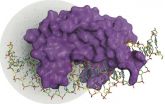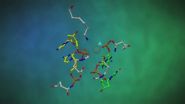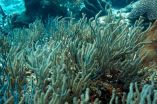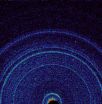(Press-News.org) Scientists from the Spanish National Cancer Research Centre (CNIO), led by Guillermo Montoya, have developed a method for producing biological crystals that has allowed scientists to observe --for the first time-- DNA double chain breaks. They have also developed a computer simulation that makes this process, which lasts in the order of millionths of a second, visible to the human eye. The study is published today by the journal Nature Structural & Molecular Biology.
"We knew that enzymes, or proteins, endonucleases, are responsible for these double strand breaks, but we didn't know exactly how it worked until now," said Montoya. "In our study, we describe in detail the dynamics of this basic biological reaction mediated by the enzyme I-Dmol. Our observations can be extrapolated to many other families of endonucleases that behave identically."
DNA breaks occur in several natural processes that are vital for life: mutagenesis, synthesis, recombination and repair. In the molecular biology field, they can also be generated synthetically. Once the exact mechanism that produces these breaks has been uncovered, this knowledge can be used in multiple biotechnological applications: from the correction of mutations to treat rare and genetic diseases, to the development of genetically modified organisms.
A SLOW-MOTION REACTION
Enzymes are highly specialised dynamic systems. Their nicking function could be compared, said Montoya, to a specially designed fabric-cutting machine that "it would only make a cut when a piece of clothing with a specific combination of colours passed under the blade."
In this case, researchers concentrated on observing the conformational changes that occurred in the I-Dmol active site; the area that contains the amino acids that act as a blade and produces DNA breaks.
VIDEO:
The video illustrates how the I-DmoI endonuclease nicks the phosphodiester bonds that maintain the structural backbone of the DNA. Based on the initial state (State 1), we can observe: two...
Click here for more information.
By altering the temperature and pH balance, the CNIO team has managed to delay a chemical reaction that typically occurs in microseconds by up to ten days. Under those conditions, they have created a slow-motion film of the whole process.
"By introducing a magnesium cation we were able to trigger the enzyme reaction and subsequently to produce biological crystals and freeze them at -200ºC", said Montoya. "In that way, we were able to collect up to 185 crystal structures that represent all of the conformational changes taking place at each step of the reaction."
Finally, using computational analysis, the researchers illustrated the seven intermediate stages of the DNA chain separation process. "It is very exciting, because the elucidation of this mechanism will give us the information we need to redesign these enzymes and provide precise molecular scissors, which are essential tools for modifying the genome," he concluded.
INFORMATION:
The study was carried out in collaboration with Modesto Orozco's computational group at IRB Barcelona, and has been funded by the Ministry of Economy & Competitiveness and the Ramón Areces Foundation.
Reference article:
Visualizing phosphodiester-bond hydrolysis by an endonuclease. Rafael Molina, Stefano Stella, Pilar Redondo, Hansel Gomez, María José Marcaida, Modesto Orozco, Jesús Prieto & Guillermo Montoya. Nature Structural & Molecular Biology (2014). doi: 10.1038/nsmb.2932
Sexual behaviour of teenage girls does not appear to be impacted by the human papilloma virus (HPV) vaccine, according to Queen's researchers Drs. Leah Smith and Linda Lévesque.
There are concerns the vaccine, which guards against four types of the HPV shown to cause cervical cancer and anogenital warts, may give girls a false sense of security about contracting sexually transmitted infections (STIs) and lead them to engage in riskier sexual activity.
"These findings suggest fears of increased risky sexual behaviour following HPV vaccination are unwarranted and should ...
When cancer is diagnosed, the grade of its malignancy is a central concern for both patients and their physicians. This value is used to determine how intensively and how radically the cancer must be treated. Particularly in the case of prostate cancer, the disease can take widely varying courses in different patients. Therefore, cancer researchers have been looking for measurable, reliable biomarkers that give clues about the aggressiveness of a tumor in order to choose an appropriate therapy.
In many types of cancer, alterations in a tumor's genetic material indicate ...
MIAMI - A new study on tropical shallow-water soft corals, known as gorgonians, found that the species were able to calcify and grow under elevated carbon dioxide concentrations. These results suggest that Caribbean gorgonian corals may be more resilient to the ocean acidification levels projected by the end of the 21st century than previously thought.
An international team of scientists, including from the University of Miami (UM) Rosenstiel School of Marine and Atmospheric Science, tested the effects of elevated CO2 concentrations on the growth and calcification rates ...
Study results of CD19-directed chimeric antigen receptor (CAR) therapy using the Sleeping Beauty non-viral transduction system to modify T cells has demonstrated further promise in patients with advanced hematologic malignancies.
Patients who had acute lymphocytic leukemia (ALL), non-Hodgkin lymphoma (NHL) or chronic lymphocytic leukemia (CLL) were part of clinical trials at The University of Texas MD Anderson Cancer Center, which used the Sleeping Beauty gene transfer system initially discovered at the University of Minnesota.
Results from the study were presented ...
Low doses of fluoxetine - better known as the anti-depressant Prozac - could hold the key to preventing PMS symptoms, an international team of researchers has found.
Up to 80 per cent of women are thought to suffer from premenstrual syndrome (PMS), which can be a debilitating condition with symptoms such as anxiety, irritability, fatigue, sleep deprivation and increased sensitivity to pain.
PMS appears to be triggered by the fall in secretion of the ovarian sex steroid hormone progesterone that occurs towards the end of the menstrual cycle and leads to a decline in ...
In 2012 the Mars Science Laboratory landed in the fascinating Gale crater. The Gale crater is of such great interest because of the 5.5 km high mountain of layered materials in the middle. This material tells an intricate story of the history of Mars, perhaps spanning much of the existence of this mysterious planet.
Once positioned, the Curiosity rover began field studies on its drive toward Aeolis Mons (also unofficially known as Mount Sharp), the central peak within the crater. Curiosity has travelled more than 9.4 km so far and during its trip up the mountain, Curiosity ...
A new advance in biomedical research at the University of Leicester could have potential in the future to assist with tackling diseases and conditions associated with ageing - as well as in treating cancer.
The research, which has shown promise in clinical samples, has been published in the prestigious scientific journal, Cell Death and Disease.
The group of scientists coordinated by Dr Salvador Macip from the Mechanisms of Cancer and Ageing Lab and the Department of Biochemistry of the University of Leicester carried out the study to find new ways of identifying old ...
Insects are full of marvels - and this is certainly the case with a beetle from the Tenebrionind family, found in the extreme conditions of the Namib desert. Now, a team of scientists has demonstrated that such insects can collect dew on their backs - and not just fog as previously thought. This is made possible by the wax nanostructure on the surface of the beetle's elytra. These findings by José Guadarrama-Cetina, then working at ESPCI ParisTech, France - on leave from the University of Navarra, in Spain - and colleagues were recently published in EPJ E. They bring ...
MOUNT VERNON, WA - Cider - or "hard cider" as it is typically known in the United States - is experiencing a real revival. The fermented apple juice with 0.5% to 7% alcohol-by-volume is the fastest growing alcohol market segment in the US, boasting a 54% increase in production annually from 2007 to 2012. Naturally, increasing consumer demand for cider translates to a need for more apples to make quality cider products.
Carol A. Miles and Jaqueline King from Washington State University's Department of Horticulture published a study in HortTechnology that can provide apple ...
An article published in the Health Affairs December issue is the first ever comprehensive analysis to investigate the Affordable Care Act's (ACA) Essential Health Benefit (EHB) as it relates to children. The study found that the EHB has resulted in a state-by-state patchwork of coverage for children and adolescents that has significant exclusions, particularly for children with developmental disabilities and other special health care needs.
Previous studies have compared the EHB standard more broadly to the Children's Health Insurance Program (CHIP), but this analysis ...







